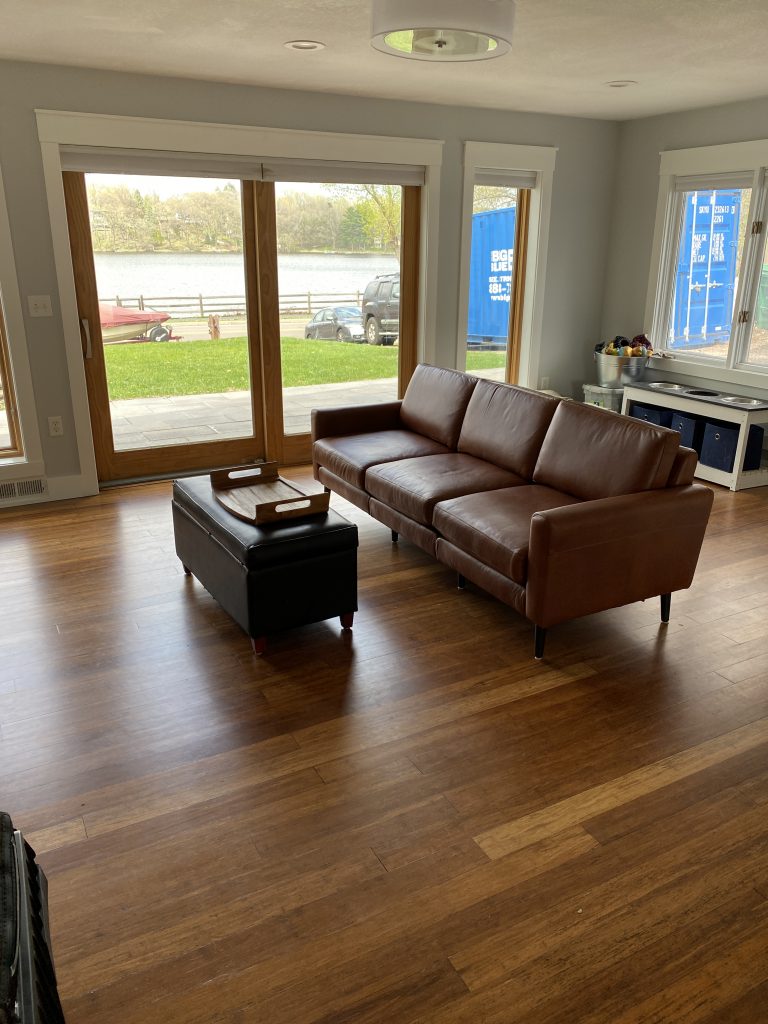Can I fix my squeaky hardwood floors?

As much as we love hardwood floors for their beauty and durability, there’s one common issue that many homeowners face: squeaky floors. Whether you’re walking across the living room or heading to the kitchen in the early morning, those annoying squeaks can quickly become a frustration. The good news is, yes, you can fix your squeaky hardwood floors, and at Choice Hardwoods, we have the expertise to help you address the root causes and find the best solutions.
In this article, we’ll explore what causes squeaky hardwood floors, how these issues might be addressed, and why it’s sometimes a bigger problem than just a loose board. We’ll also talk about the steps you can take (and when it’s a good idea to call in professionals) to ensure your floors remain quiet and structurally sound.
Why Do Hardwood Floors Squeak?
Squeaky hardwood floors can be caused by several factors, but the root of the problem usually boils down to movement. As wood expands and contracts due to temperature changes and humidity fluctuations, it can create gaps between the floorboards and subfloor. Here are the most common causes of squeaky hardwood floors:
1. Loose or Shifting Floorboards
One of the most common causes of squeaky floors is loose or shifting floorboards. Over time, as wood naturally expands and contracts, the nails or staples holding the floorboards to the subfloor can loosen. When you step on the floor, the pressure causes the boards to move slightly, rubbing against each other or the nails, which results in that familiar squeak.
Wood can also move because of moisture changes. In areas with fluctuating humidity, wood can swell in the summer and shrink in the winter, which can further loosen the boards over time. This is often the most straightforward cause of squeaky floors and can sometimes be addressed fairly easily.
2. Subfloor Issues
Another common cause of squeaky floors is an issue with the subfloor. The subfloor is the layer of wood or plywood beneath your hardwood floorboards that provides structural support. If the subfloor isn’t properly secured to the joists, or if it has warped, it can cause the hardwood floor above to move as well.
The subfloor can shift or become uneven over time, which causes the hardwood to shift and squeak when weight is applied. This is a more involved issue than just loose boards and may require additional work to stabilize the subfloor.
3. Changes in Humidity and Temperature
The natural expansion and contraction of wood is a big factor in squeaky floors. During the summer, higher humidity causes wood to absorb moisture and swell, whereas in the winter, the drier air causes it to shrink. These changes in size and shape can put pressure on the floorboards, leading to friction between them or between the boards and the subfloor, which causes squeaks. Homes with high humidity or dry conditions, like those found in many parts of Minnesota, are especially susceptible to this type of floor movement.
4. Floorboard Gaps
As hardwood ages, it can develop small gaps between the planks. These gaps, which are more common in the winter months when humidity is lower, can cause the wood to rub together. This can lead to squeaking noises when pressure is applied. The problem can become worse if the gaps grow wider over time, making it harder to keep the floorboards tightly locked together.
5. Improper Installation
Finally, improper installation can sometimes lead to squeaky hardwood floors. If the nails or staples weren’t driven in securely enough, or if the spacing between the boards wasn’t properly accounted for, it can lead to movement and squeaks. In some cases, the wrong type of fasteners might have been used, or the boards were not acclimated to the environment before installation, causing them to expand or contract prematurely.
How Can I Fix Squeaky Hardwood Floors?
The good news is that squeaky hardwood floors can often be fixed, and there are several ways to address the issue. The best method depends on the cause of the squeak and the accessibility of the floor’s underlying structure. Here are some potential solutions:
1. Fixing Loose Floorboards
If the squeak is caused by loose floorboards, this can sometimes be fixed without major work. The goal is to secure the floorboards to the subfloor more effectively. This is usually done by driving screws into the affected boards to secure them in place.
At Choice Hardwoods, we often use GRK screws to address this issue. These high-quality screws are designed to hold wood firmly in place without damaging the material. GRK screws are ideal because they offer a long-lasting solution and don’t cause the boards to shift or loosen over time. In many cases, these screws can be driven down through the floorboards into the subfloor, re-securing them and eliminating the squeak.
However, this process isn’t always straightforward. If the squeaks are isolated to a few boards, you might be able to address the problem yourself. But if the squeaks are widespread, or if they’re in an area that’s hard to access, it may be better to consult with professionals. Additionally, finding the perfect location for the screws can be tricky if you don’t want to leave visible marks on the floor.
2. Accessing the Subfloor from Below
If your home has an unfinished basement or crawlspace where the ceiling is exposed, we might be able to fix the squeaks from below. This is often the most effective method because it allows us to directly address the subfloor and joists without disturbing your hardwood floor. By securing the subfloor from below using screws or other fasteners, we can stop the movement that’s causing the squeaks. This method can be particularly effective when the problem is rooted in the subfloor, rather than just the floorboards themselves.
However, if your basement is finished or there’s no easy access to the space below the floor, this method isn’t an option. In that case, we’ll need to focus on other solutions.
3. Using a Powdered Lubricant
In some cases, applying a powdered graphite or other lubricants between the floorboards can temporarily reduce squeaks. These products can fill in small gaps between the boards and help reduce friction, quieting the noise. While this isn’t a permanent fix, it can be a quick and easy solution if you just need a temporary fix before a more permanent solution is implemented.
4. Re-Installing or Repairing the Subfloor
If the squeaks are caused by issues with the subfloor—such as warped, loose, or improperly installed sections—it may be necessary to repair or reinstall the subfloor. This can be a more involved process that requires lifting the hardwood floorboards and securing the subfloor more firmly to the joists. This is often the most extensive fix and may involve removing sections of the floor to get to the underlying structure.
This process is typically done by professionals due to the level of expertise required to properly re-secure the subfloor without damaging the hardwood floor above.
Preventing Squeaky Floors in the Future
To prevent future squeaks, it’s important to maintain a consistent level of humidity in your home. This helps prevent the wood from expanding or contracting too much, which can loosen floorboards or cause friction. Consider using a humidifier in the winter to maintain moisture levels and prevent excessive dryness, and a dehumidifier in the summer to avoid excessive moisture that could lead to swelling.
Additionally, regular maintenance, such as tightening screws or re-securing loose boards, can help extend the life of your floors and prevent squeaks from returning.

